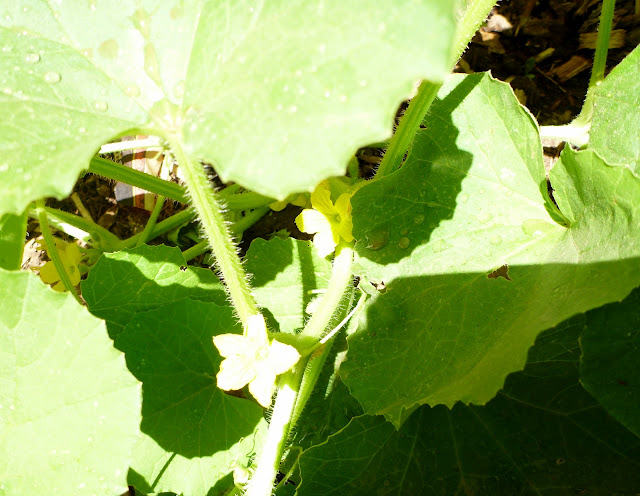There's a facility in the University area called
The Peace and Justice Center that hosts many community events, concerts, and speeches. The most important to us is their Saturday morning food distributions. They give out generous amounts of food from grocery stores that'd otherwise discard the blemished, expiring, or overstocked produce and food. Among these items are loaves of bread, gallons of milk, containers of random fruits and vegetables, and the produce itself. All of this is free, by the way.
 |
| One of our first harvests, about 3 months ago. |
 |
| Free zucchini steaming in bamboo. |
 |
| Brassicas ready to be dealt with! |
So at 8:30, we usually arrive to a long line of people waiting to get their share of the cast-off food. There is nothing inherently wrong with the food unless it is beginning to decompose, in which case we are pushed to prepare it quickly after bringing it home. Many hours of prep work can lie ahead if we feel the desire to eat diversely. There is always, however, fodder for the compost pile!
 |
| Limes, avocados, peaches, and succulent plums. |
Today, we picked up many pounds of cherries, plums, peaches, cucumbers, green/red leaf lettuces, radishes, turnips, broccoli, cauliflower, and other salad greens. Every week differs in quantity and quality of goods. Sometimes we have eggplants and other days we have avocados (23 after one haul!). As I've mentioned, it differs, and so does our diet from week to week. As it goes, many people do not pick up kale, collard, or mustard greens. We usually get first pick of those and gather enough to last us several meals. Likewise, root vegetables seem to be unpopular. They taste great made into a mash with our homemade bone stocks.
 |
| Greens and cherries in the fridge. |
With the summer weather augmented by the
chubasco patterns out here, our garden has been flourishing. Deep, slow watering from the rainfall has lead to fewer sessions out with the hose. With Jordan and my work schedule intensified recently, the break helps reduce watering responsibility from us both. Flowers are blooming quite cheerfully. We even have signs of our first vegetables growing! Little cucumbers and weeny tomatoes are already starting to extend behind their respective blossoms. Soon, I expect to have many fresh salad greens aside bountiful tomato harvests. We plan on lactate pickling more; green tomatoes and Armenian cucumbers remind me of my childhood.
 |
| Green leaf lettuce happily growing. |
 |
| Some variety of Marigold. |
 |
| Another variety, with 4 inch blossoms. |
 |
| MASSIVE mammoth sunflowers in the backyard. |
Summer in Albuquerque is gorgeous. Humidity makes things muggier than I'm used to in Tempe but pales in comparison to Chicago's soggy atmosphere. Many fruit trees out here are ready to harvest or approaching that point. We've been plucking apricots, plums, peaches, apples, and pears from neighbor's yards and "sampling." It's not quite apple or pear season yet but like the Phoenix area, many fruit trees are just left to drop their harvest. Noting which ones are neglected and ignored keeps us busy and mindful of more free nutrition. A neighbor asked us to help clean off an apricot tree several weeks ago. We came home with nearly 8lbs of pygmy apricots, an excellent companion to the yogurt we produce.
 |
| More marigolds! |
 |
| One of many emerging cukes. |
 |
| Green heirlooms. |
 |
| We love our marigolds! |
We can't wait to see what happens in our garden and the community over the coming months! I hope your summer is as fruitful--pun acknowledged--as ours!

















































